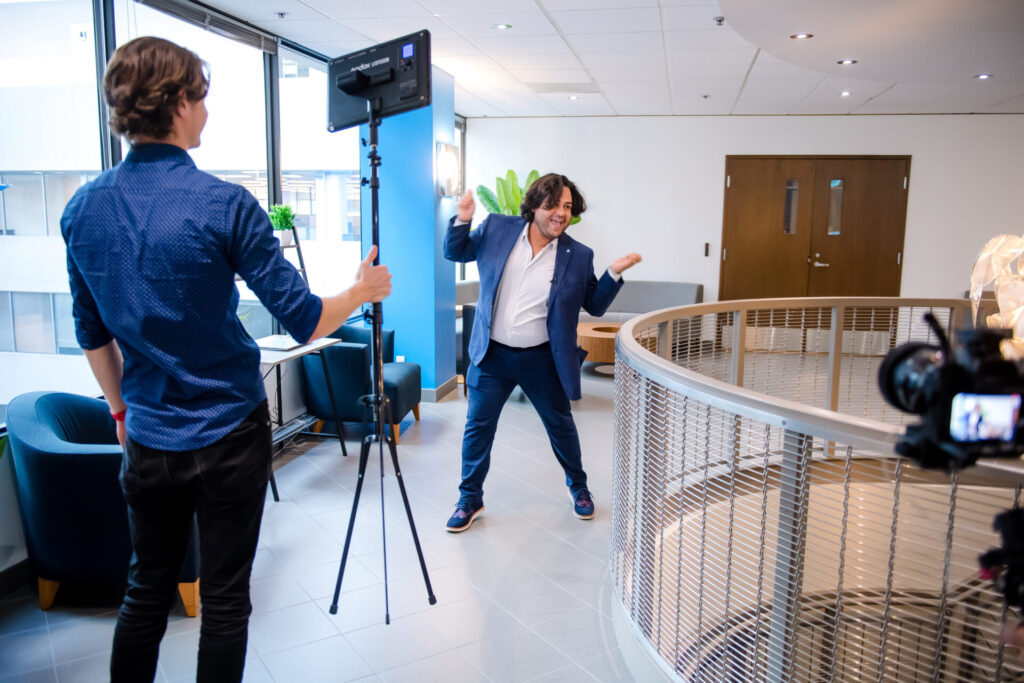Four Mistakes in Employee Storytelling (and How to Fix Them)
No one wants to watch another boring talking head video. But when you’re creating content using employee stories, there will be people talking in your videos. There are four common mistakes in employee storytelling and we’re here to help you avoid them.
The power of a great employer brand video is in storytelling. Your audience will watch a talking head video, but only if it’s done well and captures their interest. That means you need to focus on actual storytelling, captivating visuals and a hook that draws your audience in.
Mistake 1: Not making content for your audience
If you’re trying to talk to everyone with your content, you’ll end up talking to no one.
We all want something that resonates with candidates and team members, but we can miss a few important steps.
- First: identify who your actual audience is. It’s not everyone and it probably isn’t your CEO.
- Second: understand what your audience cares about. What makes them tick?
- Third: align your message to be specific to who they are and what they care about.
Tip: It’s easy to get excited about an idea you have for your videos, but you should always take a step back to ask yourself: How could I make this more informative or entertaining for my audience?
Mistake 2: Not having a creative direction before filming
Not having a tone or feel in mind before filming can result in an end product that you just don’t love. And while you don’t need to have everything pre-planned, it’s helpful to have something in mind so that you and your filming partners are aligned.
Outside of knowing your company’s brand guidelines, you should decide what emotions you’re trying to evoke from your audience. Do you want them to feel excited and pumped up? Should they feel more thoughtful and inspired? Video works well because it impacts us on a logical and emotional level. So we have to remember not to forget the emotions!
Here are some things you should think through when determining a creative direction for an employee storytelling project:
- What is the goal for this project?
- Who are you speaking to in your videos?
- What problems and desires do they have?
- How can you bridge the gap between those problems and desires?
- What do you want them to do after watching your videos?
Tip: A creative process is easier to define when you have specific examples. Look at past projects and your competitors’ content to consider what you like and what you don’t like. Be specific and break down the individual elements such as the music, the story and the visuals.
Mistake 3: Only sharing platitudes or testimonials
Platitudes are things like:
- “It feels like a family”
- “I can bring my whole self to work”
- “We’re supported by leadership”
- “Our work is really innovative”
While these are great things to say about a company, not having real stories to back them up means those comments could be from any company. It’s nothing unique to you.
As someone leading a content project, you have a lot of stakeholders to please but it’s important to go back to mistake one and remember that you’re making content for a specific audience, not your internal stakeholders. So, you’ll need the stories to back up your cultural messages so your audience understands what’s different about your company.
Tip: Anytime you hear a platitude from a storyteller, ask them for an example of a time they experienced that. This will help you go deeper and uncover an actual story behind the testimonial.
Mistake 4: Overplanning
Employee storytelling projects involve real people sharing their real experiences and things aren’t always going to go exactly as you expect it to.
Go into your projects open-minded, anticipating there will be stories uncovered that you couldn’t have planned for and that you don’t want to waste.
At Stories Inc., our filming days include interviews with eight storytellers for 20-25 minutes each. That’s more than 200 minutes of footage to use!
And not everything will be usable. But there are many times an opportunity to tell a great story gets passed by because it doesn’t 100% align to the themes you had your heart set on before the interviews.

Team members have incredible stories and it’s sad when they don’t all see the light of day. And, oftentimes these stories mean the most to a storyteller, too, because it’s something really personal.
Tip: Have a deliverable or two that is not prescribed going into a filming day. This gives you the room to use a great story that surfaces that isn’t fully aligned to a topic you had in mind.
Avoid common mistakes in employee storytelling
Employee storytelling gives you the opportunity to humanize your brand. By harnessing authentic experiences, you can differentiate your company by building stronger relationships with your stakeholders and connecting with your intended audiences.
This means diving deeper into the people behind your brand and positioning your company as a supporting character in their story. We can get caught up in catch phrases or campaigns, but stories are the opportunity to show concrete examples of how those things come to life.
Focusing on the individual level first will help more people resonate and care about what you have to say, so they’ll stick around to hear more.
If you’re looking for more insight into the mistakes in employee storytelling, watch the full recording of our recent learning session.

